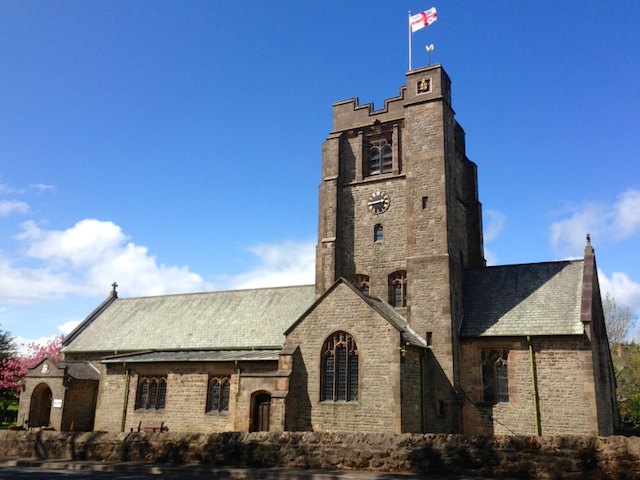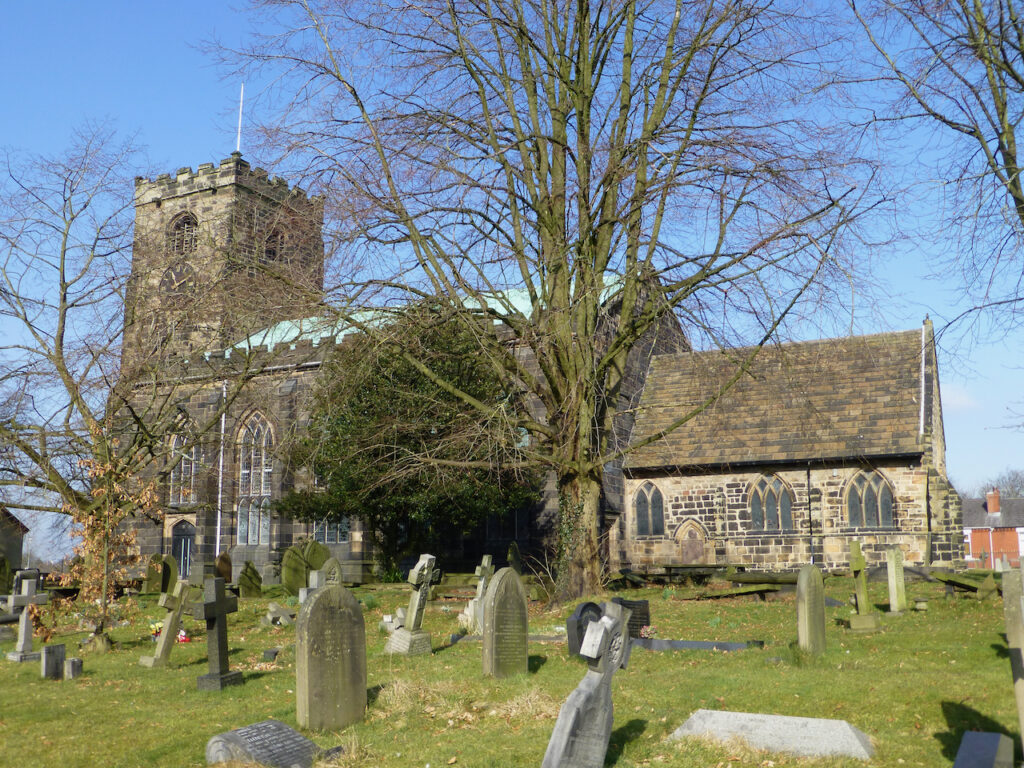
The Bells
St Hilda’s church has a fine ring of 1949 Mears & Stainbank bells. The tenor bells weighs 14-1-21, 733 kg, and is tuned to F♯.


St Andrew’s church host a fine-toned ring of 10 Gillett & Johnston bells cast in 1929. Further details are available on the Dove website.
| Bell | Note | Weight of Bell |
|---|---|---|
| 1 | G | 5 – 1 – 14 |
| 2 | F | 5 – 2 – 7 |
| 3 | E♭ | 5 – 2 – 14 |
| 4 | D | 5 – 3 – 5 |
| 5 | C | 6 – 1 – 19 |
| 6 | B♭ | 8 – 1 – 21 |
| 7 | A♭ | 10 – 3 – 4 |
| 8 | G | 12 – 2 – 9 |
| 9 | F | 16 – 3 – 12 |
| 10 | E♭ | 22 – 2 – 16 |
Most visitors use the Tesco car park which is a council-owned short term car park.
Here are three extracts from the St Andrew’s Day peal from 2022.
The church of St Mary le Ghyll is situated close to the Lancashire & Yorkshire border. It has a pleasant sounding ring of six bells in the key of A flat. The second, third and fourth were cast in 1723 by Abraham II Rudhall with the treble cast in 1870 by John Taylor & Co. and the fifth and cast is 2007 and the sixth cast in 2009 by Taylors, Eayre & Smith. There are almost no neighbours which make the tower popular with peal bands.
Christ Church Cathedral in Stanley is the most southern Anglican Cathedral in the world.
It has five bells which were cast in 1904 at Whitechapel Foundry by Mears of London. They were installed by the clock-maker J W Benson of London in 1905 as the chiming and striking bells of the clock installed at the same time.
The bells are 2, 3, 4, 7 and 8 of an eight with the tenor tuned to A♭ and weighs 9-0-9 (860 kg). The front four bells have clappers with flights while the tenor has a loop at the end of the clapper. It appears that the tenor was originally intended to be chimed as a service bell and can still be chimed from the entrance to the Cathedral. The front four bells have ropes tied to the flight of the clapper with various pulleys in place. I understand that this was an adaptation made later by the local ringers to enable all five bells to be chimed from the ringing room.
My thanks to Tim Jackson from the Dove website for the following:
2. 24.5″ 3.2.9 1576 Hz (G+9c) [-10c]
3. 26.375″ 4.0.2 1400 Hz (F+4c) [-15c]
4. 28″ 4.1.9 1253 Hz (Eb+12c) [-7c]
7. 34″ 6.1.13 921 Hz (Bb-21c) [-40c]
8. 38″ 9.0.9 840 Hz (Ab+19c) [datum]
All bells carry the inscription, “J W BENSON LIM. LONDON E.C. 1904” on the top band. Bells 2, 3, 4 and 7 are further inscribed “CATHEDRAL FALKLANDS” on the waist. The tenor is inscribed “MAY GOD BLESS ALL WHOM WE DO CALL” and “ORISSA DEAN IN MEMORIAM GEORGE MARKHAM DEAN DIED 1st APRIL 1888”.
Pretty much the only ways of getting to Stanley are by ship or fly. The Cathedral is in Ross Road on the harbour-side and is adjacent to the whale arch. I understand the bells are often rung before the morning service on Sunday. Unfortunately, I arrived too late and on a day when the local ringers were not there. Not wishing to miss the opportunity to ring, I obtained permission from the priest to enter the tower and chime the bells.
Fabian Steadman, sometimes referred to as “The Father of Change Ringing” was born in the village of Yarkhill and was baptised in the church on 7th December 1640. His father, Francis, was rector at St John’s between 1625 and 1671. It was during that time that a ring of four bells was installed in the tower. A new light ring of eight was installed in 2011 with the bells cast by Whitechapel Bell Foundry Ltd. The tenor bell weighs 228 kg and the ring is tuned to D. There have been discussions about hanging the old ring of four so they can be sounded again. But at the moment, no concrete plans have been made public. The lightest three of the bells were cast in 1671 by John II Martin. The fourth bell, the tenor, was cast in 1636 by John Finch.